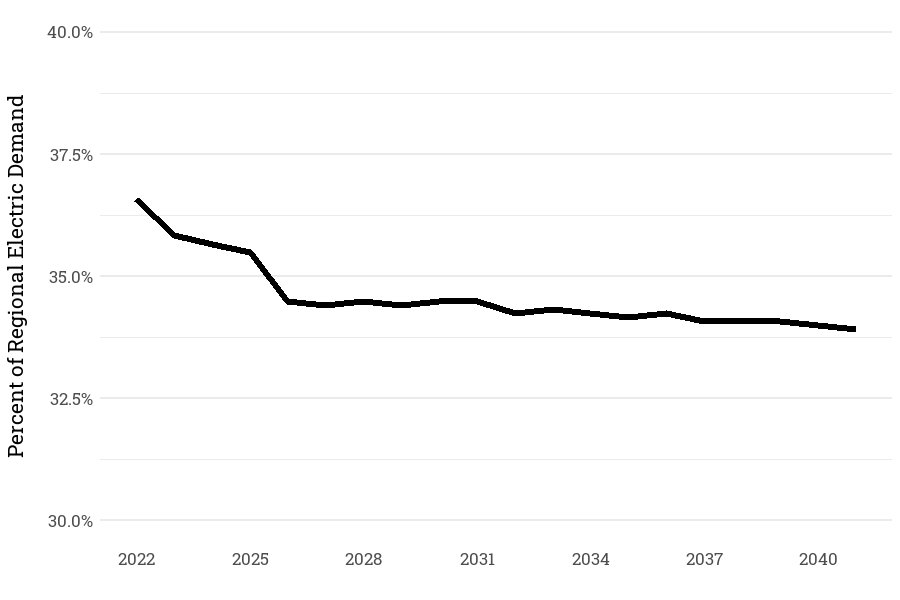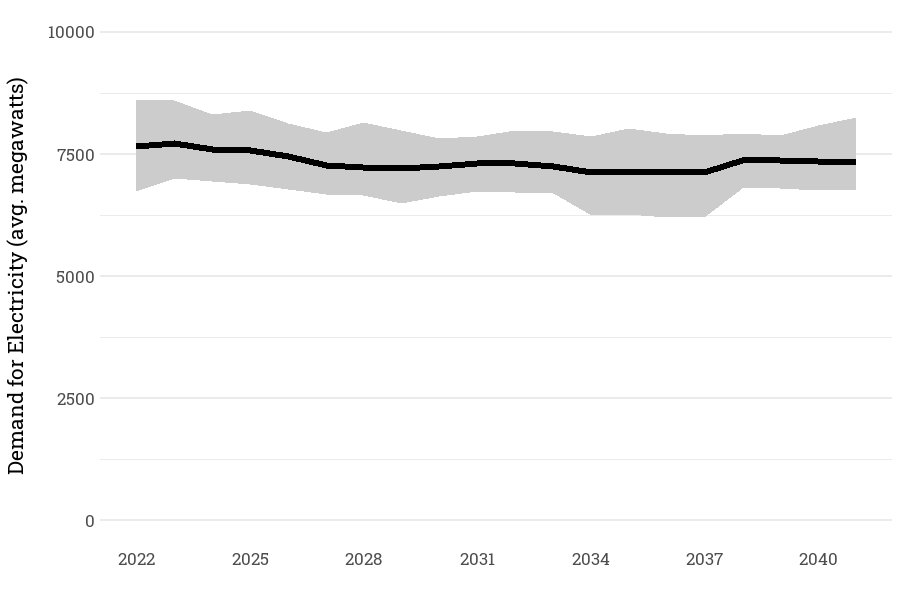The Council estimates[1] that the proportion of the regional demand for electricity that Bonneville is obligated to supply[2] with the federal power resources starts at just under 37 percent in the first year of the 20-year power plan forecast period and falls to just above 32 percent by the end. Through 2028, this estimate is based on the current Bonneville Regional Dialogue contracts[3]. After 2028 the Council assumes the contracts will be substantially similar, but in our scenario analysis we test the implications of both adding to and subtracting from Bonneville’s obligation. That is, in our analysis we anticipate that Bonneville and its customers will sign new contracts, but we also acknowledge there is uncertainty about any contracts that may follow the current Regional Dialogue.
Estimated Bonneville Obligation as a Percentage of Annual Regional Electric Demand

This graphic shows that Bonneville’s obligation decreases as a proportion of the total regional demand for electricity through 2026. After 2026, Bonneville’s obligation increases slightly.
Forecast Electric Demand Bonneville is Obligated to Supply

The Council’s forecast includes estimates of climate-change impacts. However, Bonneville is less impacted by temperature than is the region. To incorporate the impacts of temperature, we partitioned Bonneville’s obligation into three categories: contract obligations, subscription obligations, and temperature-sensitive obligations.
Contract obligations are fixed amounts of electricity that Bonneville is obligated to deliver. These amounts do not increase or decrease based on temperatures in the region.
Subscription obligations are driven by the amount of power the federal resources generate. Temperature does not impact the total amount of power Bonneville is obligated to deliver in this category, but it may impact the timing of when that power is delivered.
Temperature-sensitive obligations are deliveries that respond to weather extremes and generally are less than half of Bonneville’s obligation, but that changes between different quarters of the year and also between forecast years.
[1] The Council greatly appreciates Bonneville supplying data and supporting our analysis, which enabled the estimates included in this section. However, these estimates do not correspond to any publicly released forecast from Bonneville, nor are they intended to represent the forecasts Bonneville uses for its various functions and purposes.
[2] While Bonneville has broad obligations under the Northwest Power Act, we use “obligation” to refer to the amount of electricity that will be requested from Bonneville by entities that have a statutory right to have Bonneville supply electricity to them.
[3] https://www.bpa.gov/p/Power-Contracts/Regional-Dialogue/Pages/Regional-Dialogue.aspx



